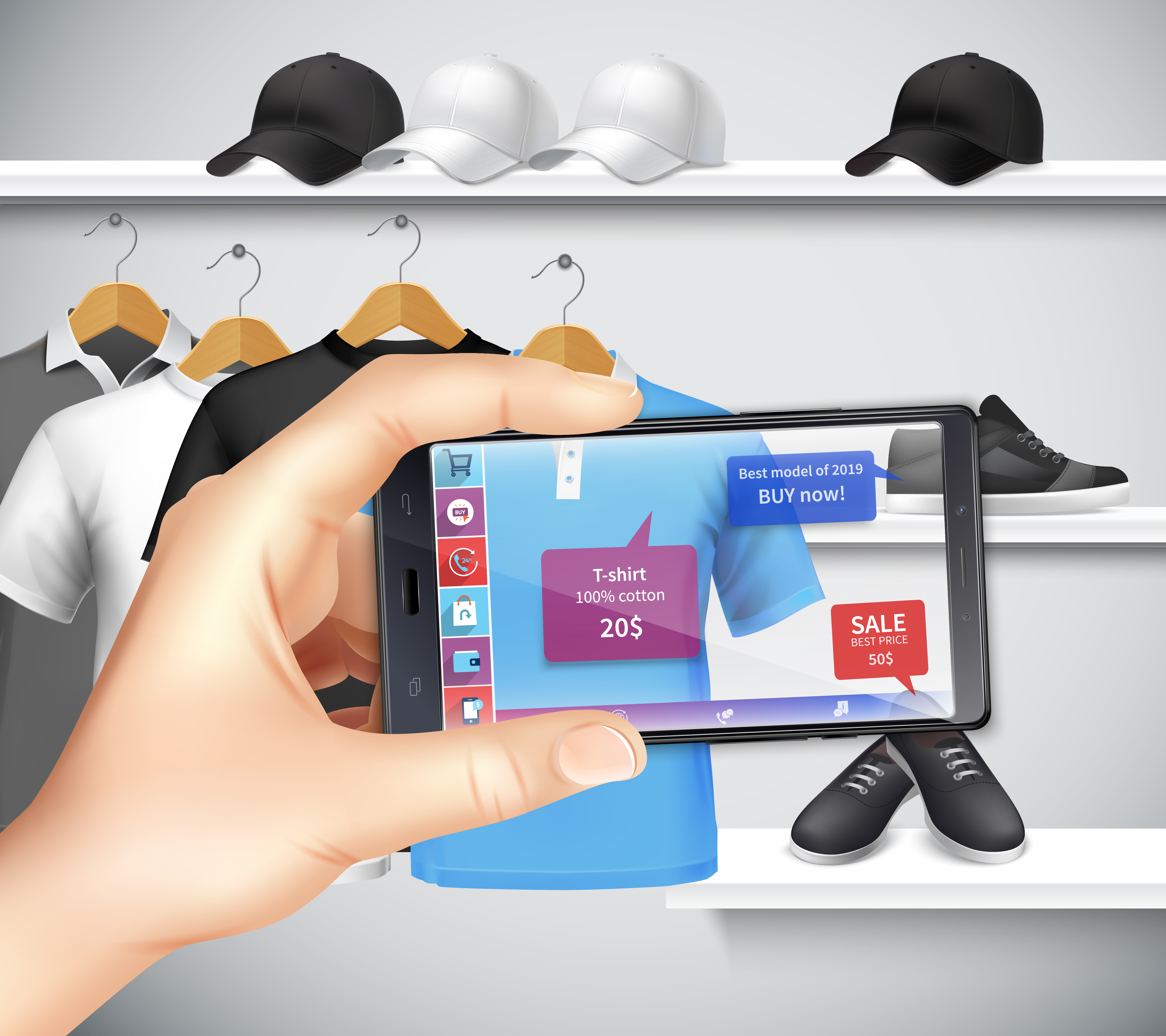Augmented Reality Has Proven to Be a Game-Changer for Retail Businesses

7 Aug
2023
High-end advancements in technology have revolutionized the retail industry in the last few years, and one of the most notable developments is augmented reality (AR). Blending digital elements into the real world, Augmented reality makes sure that customers experience an elevated shopping affair altogether. From trying on virtual clothes to visualizing furniture in a living room before purchase, AR has paved the way for new avenues for businesses to engage with their customers. This in turn has boosted sales to a significant extent. This blog post is going to explore the impact of augmented reality on retail, highlighting its benefits and potential challenges.
As per a new market report by Allied Market Research, the augmented reality in retail market is projected to lay out a noteworthy CAGR from 2021 to 2031.
Enhanced customer engagement
Gone are the days when customers used to rely on traditional product images only; with the emergence of AR-powered apps, shoppers can now virtually try on clothing, accessories, and even makeup products. This avant-garde technology has actually transformed the way customers interact with products.
This immersive experience not only enables customers to make more informed purchasing decisions but also reduces the chances of returns, thus boosting customer satisfaction.
Moreover, AR makes it easier for retailers to offer personalized recommendations based on customer preferences and previous purchasing behavior. By proposing suggestions, businesses can form a stronger connection with their customers, building loyalty and incurring profits.
An answer to space crunch in physical stores
Physical retail stores often face space constraints. It limits the number of products they can display. However, with augmented reality on board, businesses can actually overcome these limitations and exhibit their entire product catalog virtually. This way when AR apps let customers explore an extensive range of products, they also ensure that shoppers have access to a broader selection of items.
Cost-effective Marketing Tool
Also, for businesses with limited budgets, augmented and virtual reality has come out as an effective marketing tool. Brands can now focus on constructive AR campaigns that grab the attention of customers, thus increasing brand awareness to a new height. Be it a virtual try-on experience or an interactive AR game, these campaigns work effectively in terms of generating the much-required buzz and social media shares, driving huge traffic to the store or website. By deploying the power of AR for marketing, businesses can bring about considerable results without significant upfront costs.
Improved data collection and insights
Providing valuable data insights into customer behavior & preferences, AR has reinforced the concept of retail automation in more than one way. Retailers can now assess user interactions with AR apps to understand the most preferred products by customers. They can also get to the bottom of the features customers are drawn to. These valuable insights help them in proper inventory management, new product development, and forming required marketing strategies. Finally, it helps businesses stay ahead of the competition.
Challenges and considerations
While the potential of augmented reality in retail is undeniable, businesses must be mindful of some challenges too.
Adoption of technology: Augmented reality requires customers to have highly consistent devices, which may limit its reach in the initial stage. However, as technology becomes more widespread, this limitation is likely to diminish over time.
Development Costs: Simultaneously, creating top-quality AR experiences can be costly, especially for small-scale businesses. Here, retailers should carefully assess the ROI and highlight AR projects that perfectly align with their marketing and sales objectives.
User experience: Last but not the least, a seamless AR experience is highly important for customer satisfaction. Businesses should spend on user-friendly AR applications that improve, instead of hindering, the shopping experience.
Wrapping up
To sum up, augmented reality is certainly a game-changer for the retail industry, providing businesses an opportunity to engage customers like never before. Through riveting experiences, customized recommendations, and cost-effective marketing campaigns, AR comes with the full potential to drive customer satisfaction, improve brand loyalty, and increase sales. By adopting the power of augmented reality tactfully, retailers can stay highly competitive in the market and continue to provide seamless shopping experiences to their customers. As technology evolves at a rapid pace, businesses that take up AR will undoubtedly be at the forefront of the retail transformation.

Koyel Ghosh
Author’s Bio- Koyel Ghosh is a blogger with a strong passion and enjoys writing in miscellaneous domains, as she believes it lets her explore a wide variety of niches. She has an innate interest in creativity and enjoys experimenting with different writing styles. A writer who never stops imagining, she has been serving the corporate industry for the last five years.
Avenue: Entire Library membership of Allied Market Research Reports at your disposal
- Avenue is an innovative subscription-based online report database.
- Avail an online access to the entire library of syndicated reports on more than 2,000 niche industries and company profiles on more than 12,000 firms across 11 domains.
- A cost-effective model tailored for entrepreneurs, investors, and students & researchers at universities.
- Request customizations, suggest new reports, and avail analyst support as per your requirements.
- Get an access to the library of reports at any time from any device and anywhere.
Related Post
-
How are Submarine Cables Transforming Global Connectivity with Enhanced User Experience?
-
Endoscopy Procedures: Transformations in Techniques and Applications
-
AI-Powered Video Analytics: How the Product Actually Works for enterprises
-
Painting Robots: Transforming Precision Coating and Creative Applications
-
Innovations in Pharmacovigilance Systems Advancing Patient Safety
-
Understanding Edge Security: Keeping Data Safe Near the Source
-
Exploring the Use and Advancements of 3D Laser Scanners in Professional Applications
-
Reinforcing Industrial Controls with Smarter Tools and Training








